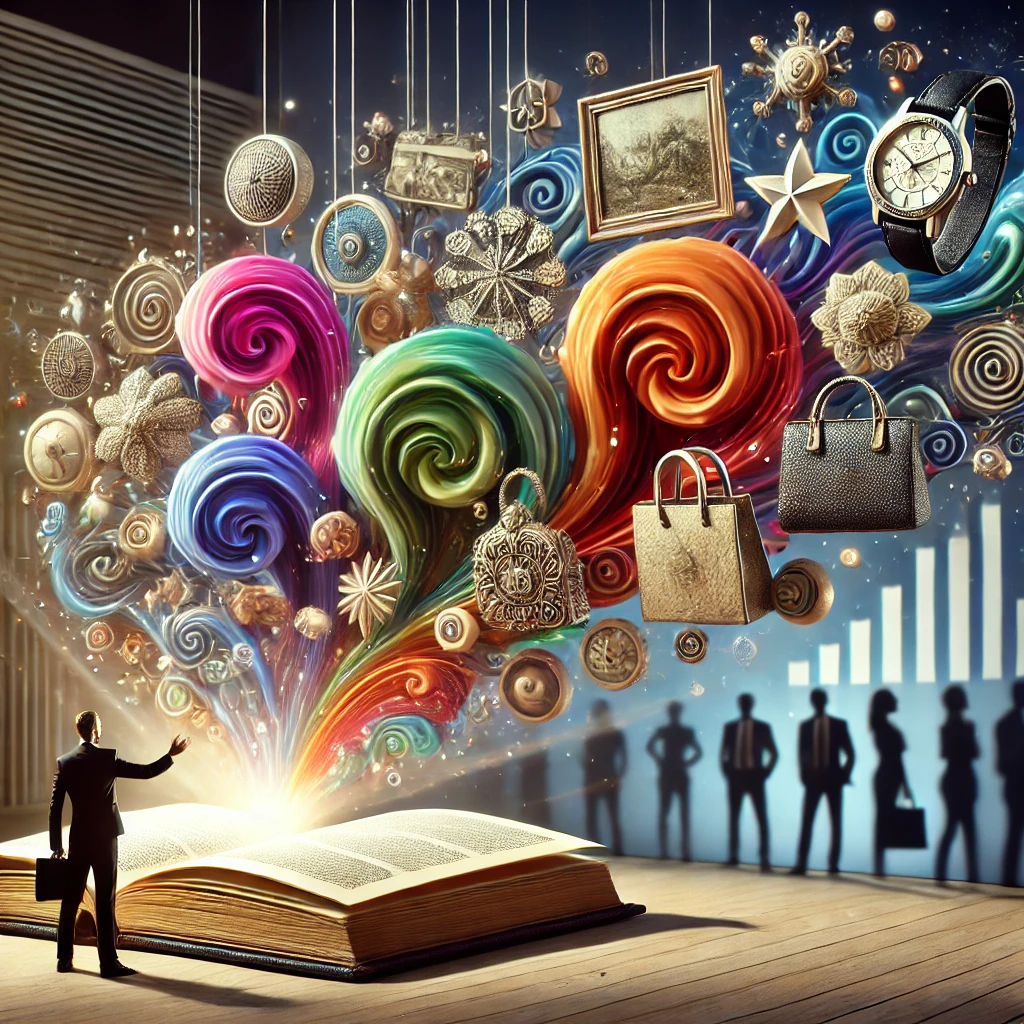How Value is Shaped by Narratives
We live in a world where value isn’t always determined by the inherent qualities of a product. Instead, its worth often stems from the stories we tell about it. From luxury goods to rare collectibles, the value of items increases not because of their material worth but because of the narratives surrounding them. The key force behind this shift is the manipulation of perception—where the story becomes more important than the thing itself. Let’s dive deeper into this phenomenon.
1. The Power of Narration
In today’s world, the narrative around a product can shape its value far more than its intrinsic qualities. Consider a luxury watch like a Rolex. It’s not just a tool to tell time. The story it tells is about prestige, success, and timeless craftsmanship. Wearing one signals membership in an exclusive club, and that story makes the product far more valuable than its basic function.
This dynamic isn’t limited to watches. Art provides another example: A painting by Picasso isn’t just a canvas with paint; it’s the legacy of an artist who shaped an entire cultural movement. The narrative surrounding the artist—their genius, their impact—can add millions to the value of a single piece of art. Without these stories, a painting is simply a colorful arrangement on a canvas.
2. Influenced Perception
Consumers are often drawn to these stories because they fulfill deep-seated psychological needs:
- Identity: Products like designer handbags or high-end cars become more than just items—they’re symbols of the buyer’s identity. When someone owns a Louis Vuitton bag, they’re not just carrying a handbag; they’re communicating that they’ve “made it.”
- Belonging: Products with strong stories can make consumers feel part of a community. Apple’s “Think Different” campaign created a sense of belonging among its users. Owning an Apple product wasn’t just about functionality; it was about subscribing to a bigger vision.
- Status: Luxury goods, art, and rare items elevate the social status of their owners. The more exclusive and culturally significant the story behind an item, the higher its perceived value.
The irony is that many consumers aren’t necessarily buying the product—they’re buying into the story. It’s about becoming something, a transformation that the product promises.
3. Artificial Scarcity
Another key strategy for increasing value is the concept of scarcity. Luxury goods, limited-edition sneakers, and even rare trading cards are examples of items where their value is artificially inflated by how few are available. A product that is rare is inherently desirable, but the scarcity is often manufactured, not natural.
Limited releases and exclusive drops ensure that only a select few can access the item, which inflates its value in the eyes of consumers. Take the example of sneakers like Air Jordans. They’re not any different in quality than other shoes, but the story—of scarcity and exclusivity—makes them worth so much more.
4. The Profit Machine
Behind the scenes, corporations and marketers are fully aware of the power of storytelling. Their aim isn’t just to sell products; it’s to sell a story. This becomes a vicious cycle:
- Overpriced Goods: Companies use branding to justify exorbitant price tags. The value isn’t in the materials or craftsmanship; it’s in the story that the brand tells. A luxury item becomes valuable because the consumer believes it should be, based on the narrative constructed around it.
- Planned Obsolescence: New stories are constantly being generated to keep the consumer hungry for more. Think of the yearly release of new phones or tech gadgets. Every iteration tells a new story about “innovation” or “improvement,” creating a false sense of need.
- Artificial Narratives: Words like “handmade,” “locally sourced,” or “limited edition” are narrative tools used to drive up perceived value. In reality, the actual quality of the product may not be any better, but the story around it elevates it.
5. The Psychological Trap
What makes this system so effective is how deeply it taps into human psychology. Humans are naturally inclined to look for meaning through stories. And when products come with compelling narratives, they become more than just things—they become symbols of identity, aspiration, and social status.
But this leaves us vulnerable to manipulation. The cycle looks something like this:
- Creatives produce genuine stories—whether through art, design, or marketing.
- Corporations commodify those stories to sell a product.
- Consumers, hungry for meaning, buy into the manufactured narratives.
- The cycle repeats, with even more products needing stories to sell.
The result is a constant loop where people are buying more stories than actual goods.
6. Is This Inherently Bad?
While it may seem manipulative, this practice isn’t necessarily a reflection of anything inherently evil. Humans have always attached stories to value, long before the advent of capitalism. In fact, storytelling is one of our most ancient and basic forms of meaning-making. From ancient rituals to trade, stories have always been a part of how we assign value.
The difference today is scale and intensity. Now, rather than naturally evolving stories, we have entire industries built around manufacturing these narratives. The line between genuine meaning and calculated marketing is often blurred.
7. Breaking Free
Despite the power of storytelling in shaping value, there are ways to break free from this cycle:
- Awareness: Understanding that much of what you value is shaped by external narratives helps you detach from the need to buy into them. You can start asking, “Do I really need this, or am I buying into a story?”
- Reconnecting with Real Value: Focusing on the utility and intrinsic qualities of products, rather than the narrative they come with, can help refocus your attention on what truly matters.
- Supporting Authenticity: Look for creators or small businesses whose stories aren’t manufactured. Supporting genuine artistry over flashy marketing helps break the chain of corporate storytelling.
- Creating Your Own Stories: Instead of buying someone else’s narrative, focus on creating your own. Personal meaning and identity are more powerful when they come from within.
Filantropica and the Power of Storytelling
In the 2002 Romanian film Filantropica, the theme of storytelling is explored in a satirical way. The movie follows the life of a man who, in his struggle to find a better life, starts to tell a story of “philanthropy” in order to gain respect and acceptance from others. The central character uses this narrative to manipulate people and gain something for himself—whether it’s social status, financial gain, or even personal validation. In Filantropica, the power of storytelling isn’t just a tool for buying things; it’s a tool for navigating life and gaining power in a system that often values image over substance.
This resonates with our earlier discussion. The story, no matter how empty or superficial, often holds more power than the reality behind it. Whether it’s in the marketplace or in social life, the narrative can reshape value. Filantropica is a reminder of just how much control a well-crafted story can have on both individuals and society.
Conclusion: The value of products, much like the value of ourselves, is largely shaped by the stories we tell and believe. Whether it’s luxury goods, rare collectibles, or even social identities, narratives are the force that drives the perceived worth of things. And as Filantropica shows us, the manipulation of stories isn’t just a commercial tool—it’s a fundamental part of how people navigate the world. The real challenge is deciding which stories are worth believing, and which ones are just another way to sell us an illusion.


